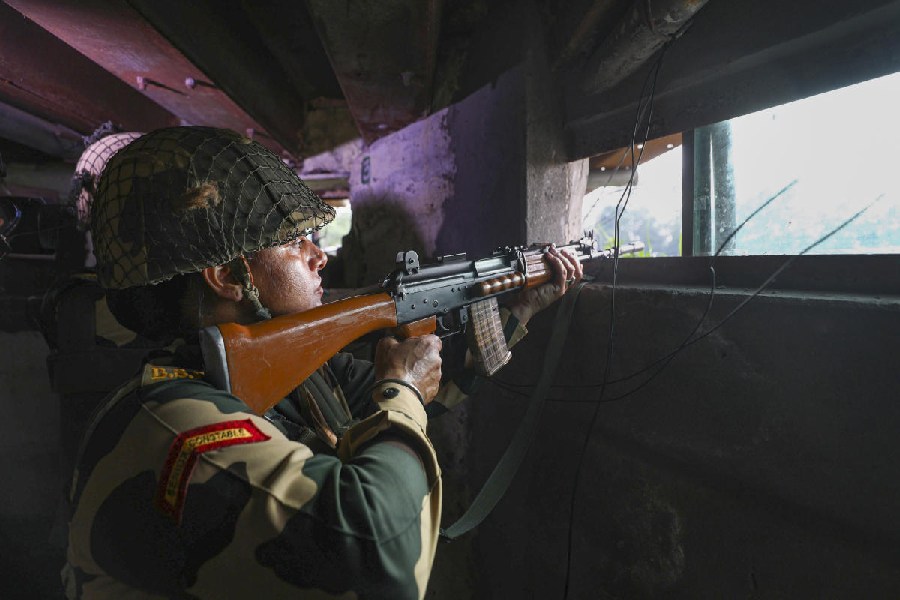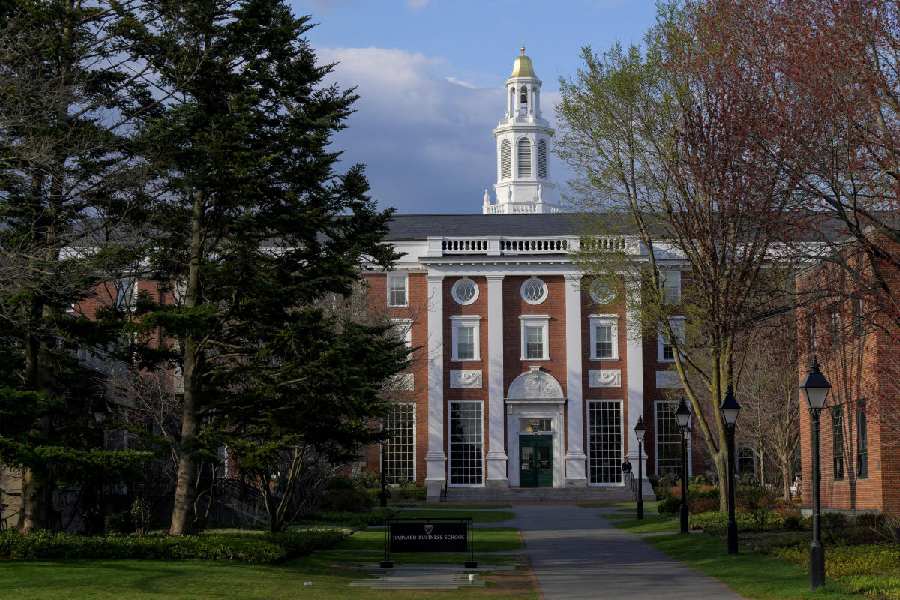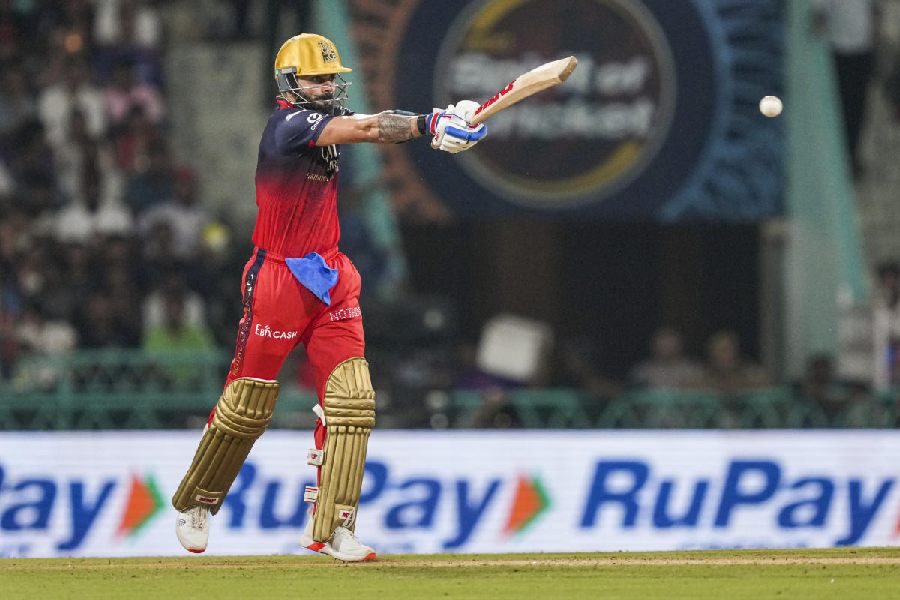 |
 |
Chandigarh, April 8: “You don’t have to do anything; you just have to smile.”
The male gaze on Gulkirat Kaur Panag is as politically incorrect in gender-sensitive times as the puritanism her Aam Aadmi Party aspires for.
Gul Panag, the star, smiles easily, in all fairness. The corners of the smile stretch almost from ear to ear, separated from the lobes by a pair of long and deep dimples.
The suggestion that all she needed to win an election was flash smiles at the voter was made to her by an acquaintance, the brother of a former central minister, in a social gathering. This was a day after she had announced herself as the candidate for the AAP for the Chandigarh seat.
“Actually, one of the two ‘mainstream’ parties was trying to buy me out by offering a safe seat,” she says.
On Monday, when The Telegraph watched her campaign for over eight hours, the smiles are aplenty. But she also goes through a roller-coaster ride of emotions, all of them evocative on her mobile face.
A tall woman, she has to face downwards to listen to local activists, mostly shorter men, who brief her before her public meetings. During the briefings, she rarely interrupts and her kohl-lined eyes don’t blink; when she meets the women in the colonies on the margins of Chandigarh, she reaches out, holds hands, places an arm on a shoulder, in commiseration that cannot be easily achieved with men; when her companion for the campaign, comedian Bhagwant Mann, also an AAP candidate from Sangrur, cracks jokes at the expense of the Congress and the BJP, she throws back her head to laugh heartily and claps.
In Raipur Kalan on the Punjab border with the Union territory, she cannot stop the tears streaming down her face and smudging the kohl when Mann narrates the story of a Class V student, a girl, who is unable to go through school despite getting top marks. A Sikh woman hands her a glass of water so that she may choke the tears. But they still roll down and not until she has been able to stop crying is she able to take the microphone and make a short speech to the people gathered around her open mini-van.
From the afternoon to late evening, she drives and walks and goes door-to-door among the marginalia of Chandigarh, through Mouli Jagran complex, Colony No.4, through Vikasnagar, through the Class IV staff quarters of Panjab University: a beautiful woman seeking to win from the ugly underbelly of “the city beautiful” in such contrast to, even in defiance of, as Mann put it, the “naaliyon and the galiyon” (the gutters and narrow lanes) in which the people, at whose cost Chandigarh’s showpiece stature is built, live and die.
“We sit in our little bubbles and pretend that life is fine,” Gul says later in the evening in her SUV on a drive from Panjab University to a fundraising dinner where each plate is priced Rs 2,500.
By then, she has found the time to freshen up and has changed from her purple kurta-black sneakers-blue jeans to a brown top, tucked in, blue jeans and shoes with heels.
“For me it was never a question of ‘if’ but always ‘when’ I will take the plunge (into politics) because I have always been involved with social concerns,” she says. “I’d gotten tired of cribbing about the system and decided to do something about it.” Her voice is hoarse from the campaign.
She has been running an NGO for some years now that seeks to give access to equal opportunities for the people among whom she was campaigning today.
Gul sticks to a single theme in her speeches: there exists not one, but two Chandigarhs. The first, north of Madhya Marg, is the VIP, lalbatti, rich, posh city of Le Corbusier's creation. The second, larger, Chandigarh is the bedrock on which rests the glitz and the glamour of the first.
It is now time for the poor of Chandigarh to stake an equal claim to the prosperity of the rich by sweeping away — with the AAP’s broom — the obstacles on the way. She lifts the discourse from municipal matters to the national level by describing the BJP as a crony-capitalist party peddling communal hatred and the Congress as dynastic and corrupt.
In the campaign she is accompanied by about 20 supporters throughout, who are joined by local activists from place to place. There are three vehicles constantly in the convoy and two open mini-vans. Her husband, Rishi Attari, a commercial airline pilot on leave, is in the SUV but stays away from the frontline at the roadshows and the public meetings.
Among the regulars in her campaign team are her cousin, Simran, from Mumbai, who says she is around to ensure that Gul takes enough water and keeps herself fit enough for the rigour. (There is little worry on that count, because the long-distance runner and biker has brought into the electoral run-up an energy that neither the BJP’s Kirron Kher nor the Congress’s Pawan Bansal can match).
Also in the squad is Harpreet, a builder based in Chandigarh, who says he has forgotten about his business since the campaign began two weeks ago, and Gurjusjit, a merchant navy officer on shore leave, who beats a drum to announce her arrival in each locality.
The public meetings inside the lanes are small affairs, attended mostly by men wearing AAP caps.
At Raipur Kalan, where she choked backed tears, Satish Kumar, 35, who said he was a labour contractor for small factories, pointed to a blind lane on either side of which were shanties and adjacent one and two-storeyed houses. Around the locality, he guessed, there were between 1,200-1,300 voters and he estimated about 80 per cent would vote for Narendra Modi.
Modi, he said, as did others elsewhere this reporter spoke to on the fringes of Gul’s meetings. Not one took the name of the BJP candidate, also a Bollywood actor, Kirron.
Asked why he thought they would support Modi, Satish Kumar said: “Because Kejriwal did not keep his government in Delhi going and also because this is the first time she (Gul) has come here.”
Kirron, he adds, has not been here at all but Modi has been everywhere – “we hear and see him every day (on television) and many of us also went to his rally” (last fortnight).
“Everyone wants change,” says Kumar.
But hasn’t he seen a BJP-led government before?
“Yes, we have. And it was not all that bad. I remember (cooking) gas cylinder-wallahs used to move around here asking if we needed any but now this (the UPA) government has imposed a cap and suddenly there is a shortage and Bansal is also stuck in a corruption case.”
The government has imposed a cap of 12 cylinders, raised from nine, per family per year. Kumar cannot explain why he needs more. His house in Raipur Kalan is single-storeyed, with a tiled roof and ramshackle walls that are part-pucca, part-kuchcha and the little plot in front of it surrounded by a fence is filled with junk, old cycles, tins, cans, worn-out tyres. He says he has a family of eight and holds a toddler in his arms.
At Mouli Jagran complex, probably the largest of the underbelly colonies, Gopal, who gives only his first name and says he is 60 years old, sits on a plastic chair next to his shop. He says he cannot get up to walk to the meeting — barely 10 feet away — because of weak knees.
He makes and sells boxes made of tin and aluminium. “Yeh log ka sunne mein aata hain. Lekin yahan ka vote toh daaru se liya jayga (one is hearing about the AAP. But the voting over here will be decided by the flow of liquor),” Gopal says.
At the Class IV quarters in Panjab University through which Gul just passes, Sushila, whose husband is a peon, says: “Hum logo toh yahin maante hain ki sabki suno, mun ki karo (we believe in listening to all but obeying the mind).”










